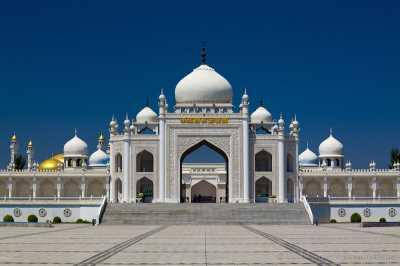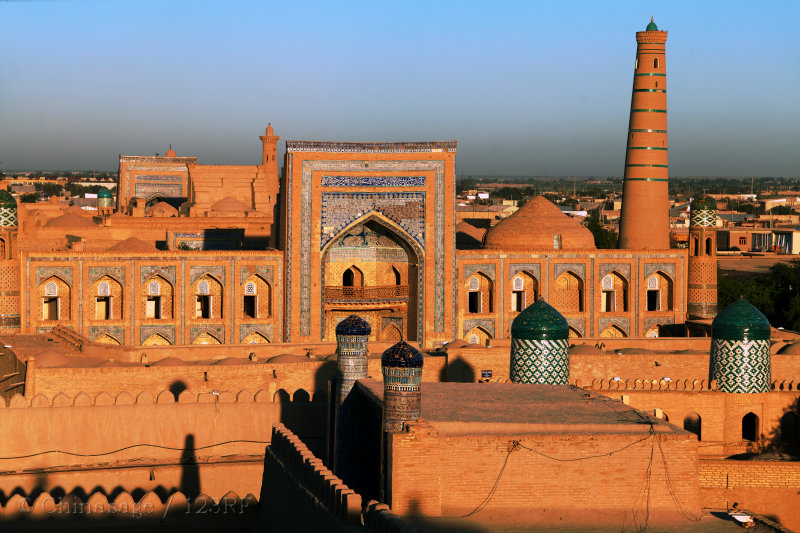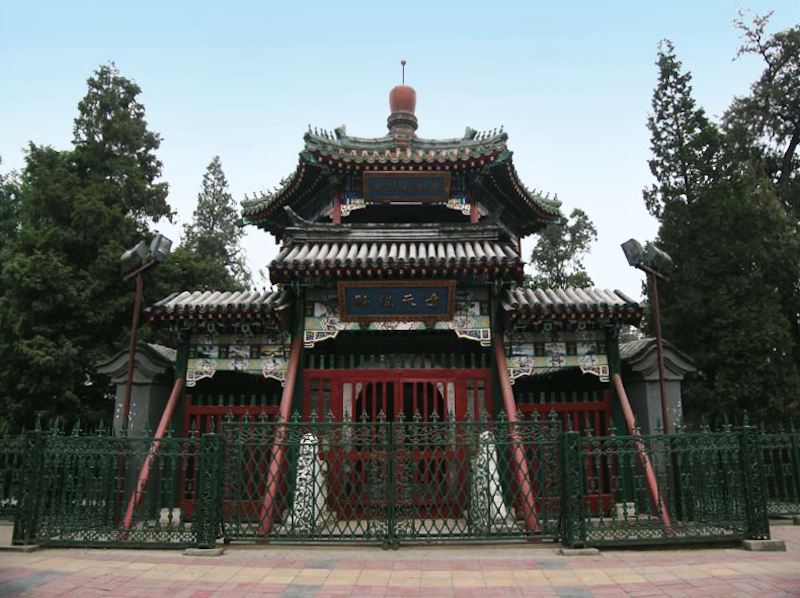Muslims in China

Islam is the dominant religion in Xinjiang and other north western Chinese provinces. Islam made its way along the Silk Route into northern China and by Arab sea traders into southern China. The earliest records go back as far as the early Tang dynasty when about 40 missions went to China. The 怀圣寺 Huái shèng sì mosque in Guangdong is considered one of the oldest in the world, traditionally said to have been founded by the prophet's uncle Sa'd ibn Abi Waqqas ➚ but there is no evidence to support this, it is more likely that it marks the tomb of the Muslim scholar Ibn Wahab who met the Chinese Emperor in about 880CE. During the Song dynasty Muslims were heavily involved in the sea trade from the southern ports chiefly Guangzhou and it is likely that they founded the first Muslim communities and built the first mosques. The Muslim community was virtually wiped out in the Guangzhou Massacre ➚ of 878-9. While in the north-west (chiefly Xinjiang) it was the Uyghur people of Turkic origin that converted to the Sunni sect of Islam.
The defeat of China by Arabs at the Battle of Talas ➚ in 751 cut China's influence over much of the Silk Route. Thereafter Central Asia was controlled by Muslims not the Chinese. Arab mercenaries were sent by Caliph al-Mansur ➚ to help the Tang Emperors put down the An Lushan rebellion and some of these soldiers settled permanently in China.
Prince Amir Sayyid ➚ is widely regarded as the founder of the modern Muslim community in China, he founded a community of Muslims in the area between Kaifeng and Beijing in the early Song dynasty. Elsewhere in China many Muslim Hui people (回 huí) are to be found in Ningxia; Qinghai and Gansu provinces. Some of these people are the descendents of Silk Road traders with central Asian ancestors. With the opening of China under the Mongols (Yuan dynasty) central Asian people flooded into China. The Mongols put foreigners including Muslims into the top posts in government, for instance the design of the new capital of Dadu (Khanbaliq present day Beijing) was under the control of architect Amir al-Din ➚ 也黑迭儿丁. Influence continued into the Ming dynasty, as exemplified by people such as the famous Muslim explorer Zheng He. With the annexation of East Turkestan as Xinjiang in the Qing dynasty, many more Muslims came under Chinese rule and when they forbade some Muslim practices there were a number of revolts by Muslim people followed by brutal reprisals. The Panthay Rebellion ➚ 杜文秀起义 (1855-73) in Yunnan led to as many as a million deaths. The Dungan revolt ➚ 同治新疆回 in northern China (1862-77) was even bloodier with about ten million victims.
Modern Oppression
When Mao suppressed all religions on the foundation of the People's Republic in 1949 there were revolts in Muslim dominated areas. Mosques and other religious buildings were destroyed. It was not until 1978 when some religious freedom was permitted that the suppression came gradually to an end.
There are now mosques in most of China's large cities with between 20 and 130 million people following Islam. Traditional Muslim clothing became a frequent sight on Chinese streets but now with fears of jihad inspired separatists, some Muslim practices are being outlawed once again.


Photo by smartneddy ➚ available under a Creative Commons license ➚